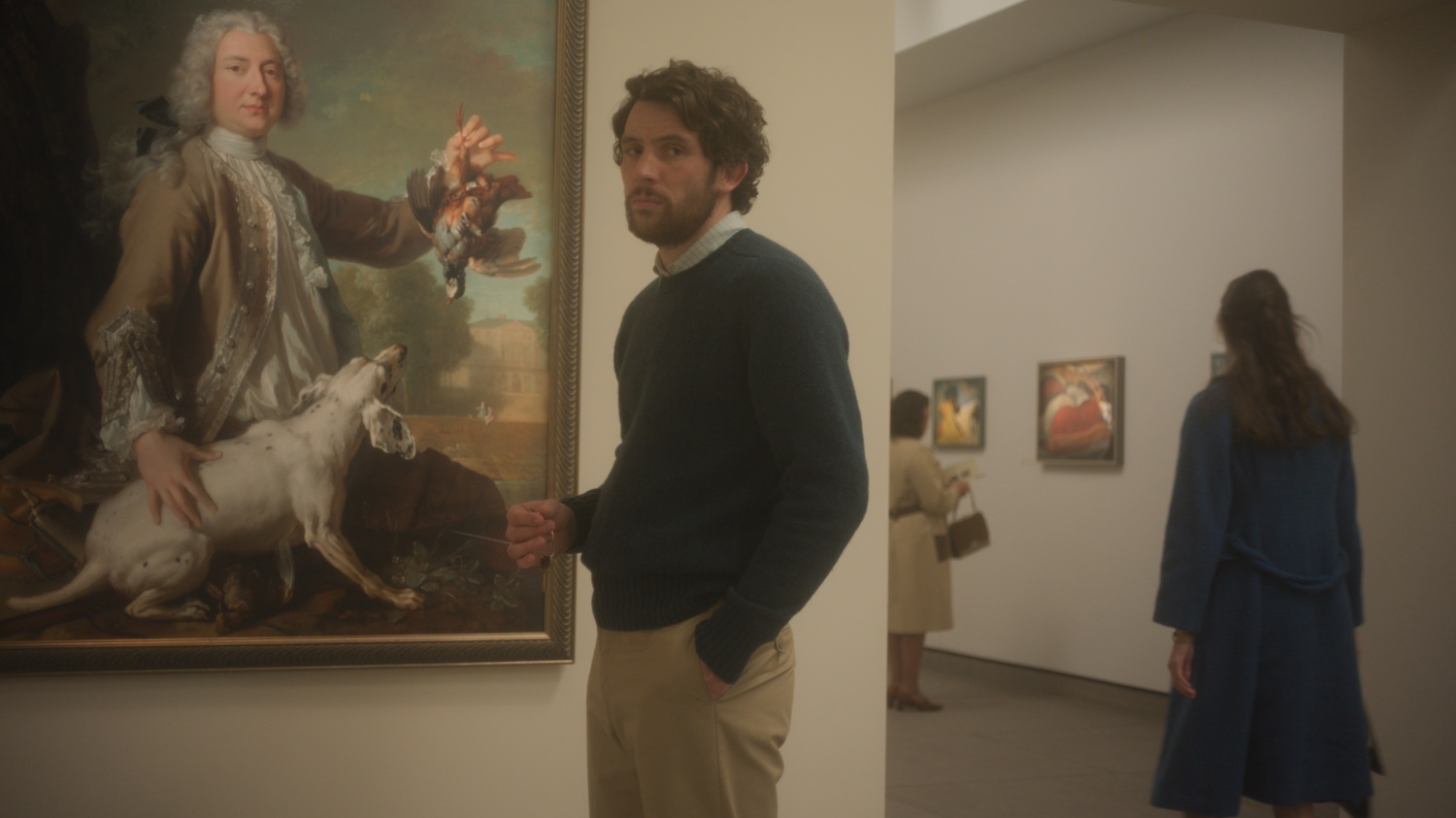
News
Summers Will Not Finish Semester of Teaching as Harvard Investigates Epstein Ties

News
Harvard College Students Report Favoring Divestment from Israel in HUA Survey

News
‘He Should Resign’: Harvard Undergrads Take Hard Line Against Summers Over Epstein Scandal

News
Harvard To Launch New Investigation Into Epstein’s Ties to Summers, Other University Affiliates

News
Harvard Students To Vote on Divestment From Israel in Inaugural HUA Election Survey
‘The Mastermind’ Review: Kelly Reichardt Thought This Through
Dir. Kelly Reichardt — 4.5 Stars

Art thieves are so back.
The opening cut of Kelly Reichardt’s newest film, “The Mastermind,” positions the viewer from the perspective of a painting that James “J.B.” Mooney (Josh O’Connor) stares at. This set-up immediately narrows the distance between subject and object, thief and art. The fictional art museum, designed by I.M. Pei and watched over by Henry Moore’s “Large Arch” in its front plaza, evokes the same modernist sensibility of the film itself, along with its anti-hero. Said anti-hero first greets us — while sneaking glances at the sleeping museum watchman — by slipping a figurine from a display into his sunglasses case.
The apparent narrative drift and dryness of “The Mastermind” are not flaws, but forms of earning character sympathy. The film’s loose structure echoes the protagonist’s uncertain rhythm and mood in the aftermath of the heist. As J.B.’s fragile attempt at ambition collapses, the movie, too, falls into unpredictable movements.
J.B. is a man moving through a seemingly ordinary life as an unemployed woodworker and art school dropout who is simultaneously orchestrating a heist in his basement. “The Mastermind” is a character study, like Reichardt’s last three: “Certain Women” (2016), “First Cow” (2019), and “Showing Up” (2022). The latest film has elements of the mundane life, akin to “Certain Women,” a triptych meditation on loneliness that follows an injury lawyer (Laura Dern) reaching a dead end, a wife (Michelle Williams) struggling to buy sandstone, and a seasonal worker (Lily Gladstone) tending horses alone on a ranch; it inhabits a fragile dream, a doomed business scheme much like Cookie (John Magaro) and King Lu’s (Orion Lee) plan to sell biscuits in “First Cow.”
Reichardt’s films are meant to be approached without expecting anything to happen. They unfold in the register of slow cinema, driven by character and places; they paint boredom as an emotion. For a heist film, conflict never quite takes hold. Reichardt clings to simple experiences that deconstruct the American imagination of steady work as purposeful — one long scene shows J.B. climbing up and down a ladder three times. She captures poignant slices of life stripped of spectacle yet filled with quiet grandeur.
Reichardt’s cinema emulates a lonesome walk in the woods, a leisurely hike where each detail — footsteps, breath, and wind — echoes. “The Mastermind” develops like the silence in the transition from autumn to winter. In its delicate compositions, a sense of place begins to develop. For instance, Reichardt patiently frames a light snow on a grass field on either side of a driveway to capture a serenity that leaves J.B. stranded in its cold, quiet world. Set in Framingham, Massachusetts, this film offers studies of modest art centers and half-wild backyards. Reichardt leaves behind the open range of her past films’ Pacific Northwest settings for a subdued New England landscape. Her locations feel reminiscent of those in a Chloé Zhao film: reserved spaces on the edge of vanishing, the in-between towns surrounding airport cities. Distance isolates them, leaving their people in a state of dull desolation.
Reichardt pares masculinity down to its smallest, most uncertain motions. J.B., convinced he must be a provider, seeks to own the beauty of the art that he loves. Each attempt to assert control over the unpredictable troubles and fallout of his actions is laughable, even ironic. The movie is surprisingly funny, filled with witty — if sometimes absurd — humor stemming from the eccentric character.
O’Connor’s show of vulnerability, with elements of the same loser that he played in last year’s “Challengers,” defines the film. He plays J.B. as a gentle, tender man of hesitations. J.B.’s life is inconsequential. He harbors but a small, personal American Dream, a flawed scheme that is comic and tragic. Inspired by modernist artists, J.B. steals four abstract landscape paintings by Arthur Dove. As the film emphasizes repeatedly, no one thinks he thought this through. As he flees — forlorn and on the run, staying at inns by himself — Reichardt’s gaze lingers on minor gestures, pausing on J.B. as he cuts out a passport photo, closing in on his hand, and prolonging his consumption of a sandwich. Solitude becomes his reckoning.
Shot on 16mm film, “The Mastermind” bears a muted, tactile texture. The grain and color-grade evoke the faded warmth of the 1970s. The images are naturalistic, earth-toned, and undersaturated with a yellow wash. Cinematographer Christopher Blauvelt, in his sixth collaboration with Reichardt, shapes light the way she shapes the script: sparingly and attentively. Nearly all scenes happen under an intimate natural light, like the glow of late afternoon.
“The Mastermind,” as a niche experiment for Reichardt and the genre, will likely remain underrated, but it is one of the better films of the year. It ranks among her more accessible films, being faster in rhythm yet still withholding in plot. Feeling longer than its runtime, it carries the realism and mood that are unmistakably hers. Beneath its offbeat heist story lies as good and bold a show of Reichardt’s elevated craft as any she’s made.
Want to keep up with breaking news? Subscribe to our email newsletter.
